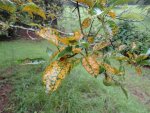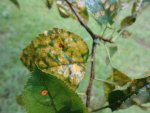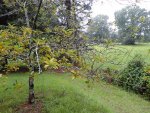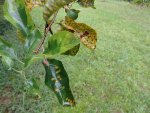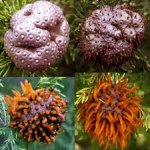gordylew
Senior Member
I have several apple trees in the yard that were planted when the house was built in 1986. The last few years I have not gotten any or much fruit because the leaves turn yellow and spotted then fall off. I've tried spray them with fungicides and insecticides in the past with little affect. There are several Leyland Cypress planted in the yard as well. Could this be Cedar blight? How do you get rid of it if it is?

